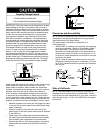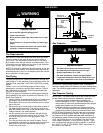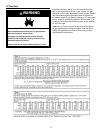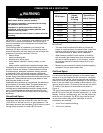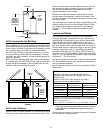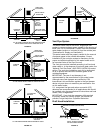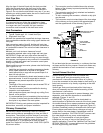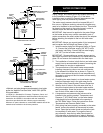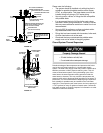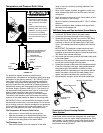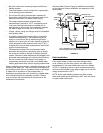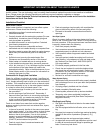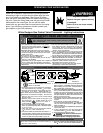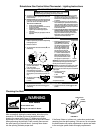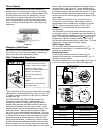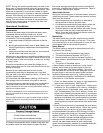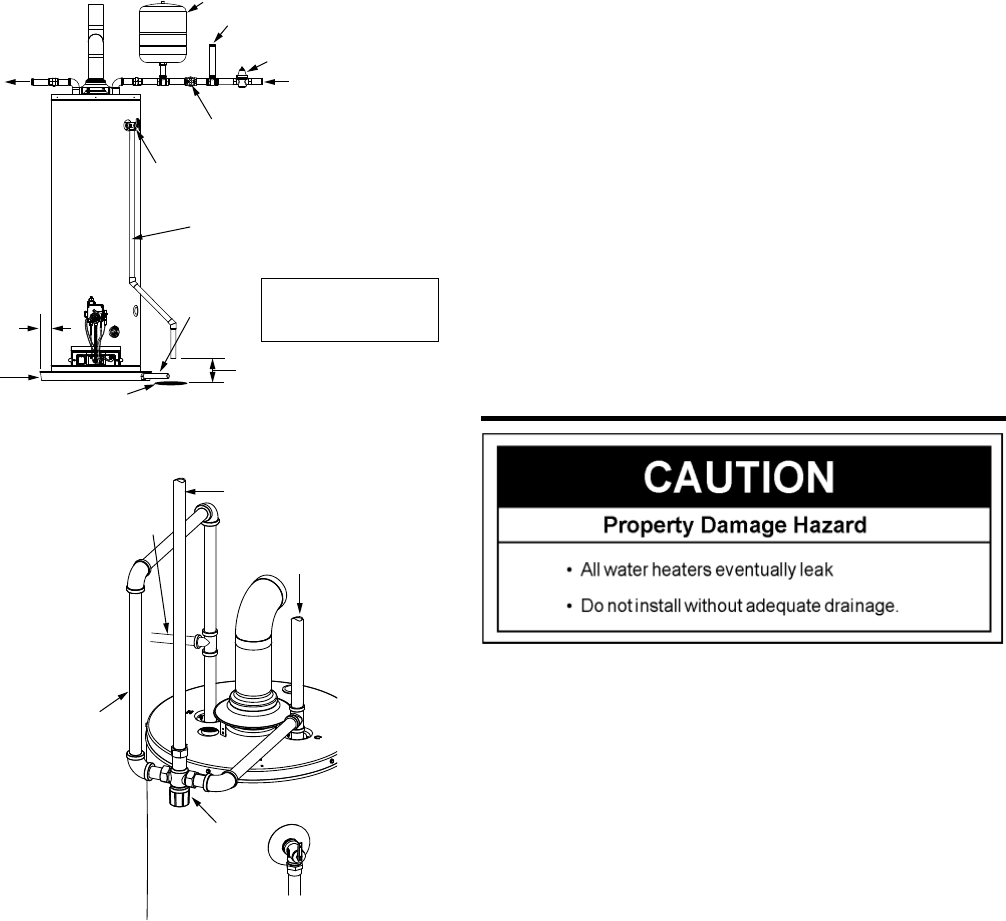
16
TEMPERATURE AND PRESSURE (T&P)
RELIEF VALVE (OPTIONAL TOP T&P
RELIEF VALVE NOT SHOWN)
DRAIN LINE
3/4” ID
MINIMUM
DRAIN
1” MINIMUM
6” MAXIMUM
AIR GAP
METAL
DRAIN PAN
DISCHARGE PIPE
(DO NOT CAP OR PLUG)
MASSACHUSETTS: INSTALL
A VACUUM RELIEF IN COLD
WATER LINE PER SECTION
19 MGL 142.
COLD WATER INLET VALVE
(SHUT-OFF VALVE)
HOT WATER
OUTLET
COLD WATER
INLET
PRESSURE REDUCING VALVE
WITH BYPASS
COLD WATER SUPPLY TO FIXTURES
IN A CLOSED SYSTEM USE A
THERMAL EXPANSION TANK
FIGURE 13.
COLD
WATER
INLET
HOT
WATER
OUTLET
TEMPERED WATE
R
TO FIXTURES
TEMPERING VALVE
(SET TO 120°F)
FOLLOW THE TEMPERING
VALVE MANUFACTURER’S
INSTRUCTIONS
UNTEMPERED
HOT WATER
FIGURE 14.
Please note the following:
• The system should be installed only with piping that is
suitable for potable (drinkable) water such as copper,
CPVC, or polybutylene. This water heater must not be
installed using iron piping or PVC water piping.
• Use only pumps, valves, or fittings that are compatible
with potable water.
• It is recommend that only full flow ball or gate valves
are used in water piping installations. The use of valves
that may cause excessive restriction to water flow is not
recommended.
• Use only 95/5 tin-antimony or other equivalent solder.
Any lead based solder must not be used.
• Piping that has been treated with chromates, boiler seal,
or other chemicals must not be used.
• Chemicals that may contaminate the potable water
supply must not be added to the piping system.
Closed System/Thermal Expansion
Periodic discharge of the temperature and pressure relief valve
may be due to thermal expansion in a closed water supply
system. The water utility supply meter may contain a check valve,
backflow preventer or water pressure reducing valve. This will
create a closed water system. During the heating cycle of the
water heater, the water expands causing pressure inside the
water heater to increase. This may cause the temperature and
pressure relief valve to discharge small quantities of hot water. To
prevent this, it is recommended that a diaphragm-type expansion
tank (suitable for potable water) be installed on the cold water
supply line. The expansion tank must have a minimum capacity of
1.5 U.S. gallons for every 50 gallons of stored water. Contact the
local water supplier or plumbing inspector for information on other
methods to control this situation.



